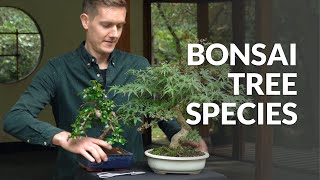Dogwood Bonsai Care guidelines
The dogwood thrives in full sun or partial shade with good air circulation. If the trees are not exposed to enough sunlight, they will produce less flowers. During the hottest weeks of summer it is advisable to provide some shade over midday and early afternoon. Dogwood species should be protected from stronger frost when they are planted in bonsai containers.
The dogwood bonsai tree should be watered thoroughly as soon as the soil gets dry. It does not like longer droughts or constant wetness. In winter it needs less water but should not dry out. Some dogwood species prefer neutral or slightly acidic pH values, but Cornus mas also tolerates alkaline water and soil. Continue reading about watering Bonsai trees.
Watering
Free lecture from the Beginners CourseUse a solid organic fertilizer every month and / or a liquid fertilizer once a week during the growing season. If the leaves become pale, use a ferric fertilizer additionally.
The dogwood grows rather quickly and new shoots are allowed to extend to four or five nodes before they are cut back to one or two leaf pairs. Larger branches can be pruned after flowering. The younger branches and shoots of the dogwood can be carefully wired in autumn or winter to improve the branch lines. Guy wires are a good option for shaping the stiff older branches, if necessary. Continue reading about pruning Bonsai trees.
Dogwood trees should be repotted every two or three years in early spring with normal root-pruning. Older and larger specimen can be repotted in longer intervals. Use a well-draining standard soil mixture with a neutral or slightly acidic pH-value. Cornelian cherries, however, prefer a slightly alkaline growing medium, so you can add some lime stone gravel. Continue reading about repotting Bonsai trees.
Dogwoods can be propagated from seed in early spring (but cornelian cherry seeds need some frost and take two years to germinate) or from semi-hard cuttings in summer. Air-layering is also possible.
The dogwood bonsai tree can be attacked by aphids, wine weevil, caterpillars, anthracnose, leaf and flower blight, crown canker, grey mold, powdery mildew or leaf-spot fungus. Use a specific pesticide or ask a professional gardener for help in difficult cases. For more detailed information on these techniques, check out our Bonsai tree care section.

Dogwood Bonsai (Cornus Kousa, by Bonsai Plaza)
General information about the Dogwood Bonsai tree
Several species have small heads of inconspicuous flowers surrounded by white, pink or yellow petal-like bracts, while others have more open clusters of petal-bearing flowers. Stone fruits develop from the ovaries and the seeds are often distributed by birds or even monkeys in some countries.
Among the most popular dogwood species for bonsai are the European cornelian cherry (Cornus mas) with yellow flowers and edible oval red stone fruit, the very similar Asian cornelian cherry (Cornus officinalis), the common dogwood (Cornus sanguinea) with white flowers and round black berries, the Japanese dogwood (Cornus kousa) with flowers with four white bracts and round compound red berries, the flowering dogwood (Cornus florida) with four white, pink or red bracts and fruit clusters of up to ten drupes. Dogwood species are frost-hardy, but their roots need some protection from strong frost when they are planted in bonsai containers.
If you need help identifying your tree, take a look at our Bonsai tree identification guide.





